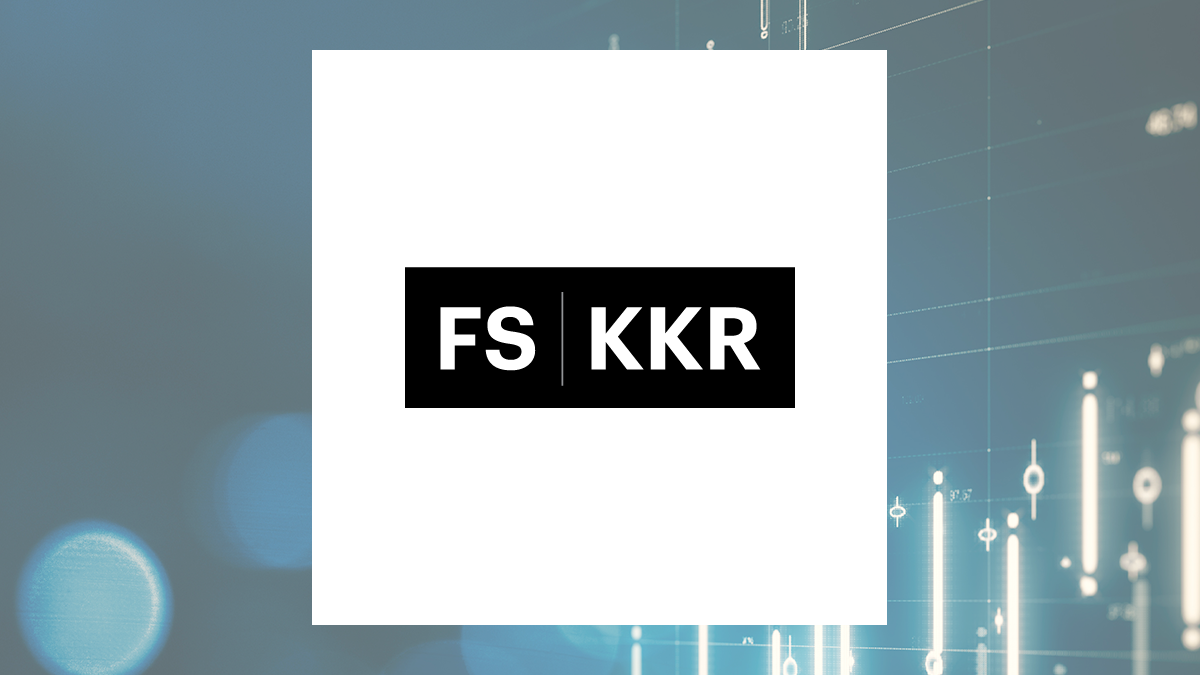Morgan Stanley Direct Lending Fund (NYSE:MSDL – Get Free Report) and FS KKR Capital (NYSE:FSK – Get Free Report) are both finance companies, but which is the better business? We will compare the two businesses based on the strength of their risk, earnings, profitability, dividends, valuation, analyst recommendations and institutional ownership.
Dividends
Morgan Stanley Direct Lending Fund pays an annual dividend of $2.00 per share and has a dividend yield of 11.6%. FS KKR Capital pays an annual dividend of $2.56 per share and has a dividend yield of 16.8%. Morgan Stanley Direct Lending Fund pays out 103.6% of its earnings in the form of a dividend, suggesting it may not have sufficient earnings to cover its dividend payment in the future. FS KKR Capital pays out 328.2% of its earnings in the form of a dividend, suggesting it may not have sufficient earnings to cover its dividend payment in the future.
Profitability
This table compares Morgan Stanley Direct Lending Fund and FS KKR Capital’s net margins, return on equity and return on assets.
| Net Margins | Return on Equity | Return on Assets | |
| Morgan Stanley Direct Lending Fund | 42.65% | 11.24% | 5.28% |
| FS KKR Capital | 13.24% | 6.24% | 2.75% |
Analyst Recommendations
| Sell Ratings | Hold Ratings | Buy Ratings | Strong Buy Ratings | Rating Score | |
| Morgan Stanley Direct Lending Fund | 1 | 3 | 3 | 0 | 2.29 |
| FS KKR Capital | 0 | 8 | 0 | 0 | 2.00 |
Morgan Stanley Direct Lending Fund presently has a consensus target price of $18.08, indicating a potential upside of 5.33%. FS KKR Capital has a consensus target price of $17.75, indicating a potential upside of 16.36%. Given FS KKR Capital’s higher probable upside, analysts clearly believe FS KKR Capital is more favorable than Morgan Stanley Direct Lending Fund.
Insider & Institutional Ownership
36.3% of FS KKR Capital shares are held by institutional investors. 0.2% of Morgan Stanley Direct Lending Fund shares are held by insiders. Comparatively, 0.2% of FS KKR Capital shares are held by insiders. Strong institutional ownership is an indication that large money managers, hedge funds and endowments believe a stock will outperform the market over the long term.
Risk and Volatility
Morgan Stanley Direct Lending Fund has a beta of 0.25, meaning that its share price is 75% less volatile than the S&P 500. Comparatively, FS KKR Capital has a beta of 0.94, meaning that its share price is 6% less volatile than the S&P 500.
Earnings & Valuation
This table compares Morgan Stanley Direct Lending Fund and FS KKR Capital”s gross revenue, earnings per share and valuation.
| Gross Revenue | Price/Sales Ratio | Net Income | Earnings Per Share | Price/Earnings Ratio | |
| Morgan Stanley Direct Lending Fund | $416.08 million | 3.58 | $215.56 million | $1.93 | 8.90 |
| FS KKR Capital | $1.72 billion | N/A | $585.00 million | $0.78 | 19.56 |
FS KKR Capital has higher revenue and earnings than Morgan Stanley Direct Lending Fund. Morgan Stanley Direct Lending Fund is trading at a lower price-to-earnings ratio than FS KKR Capital, indicating that it is currently the more affordable of the two stocks.
Summary
Morgan Stanley Direct Lending Fund beats FS KKR Capital on 8 of the 15 factors compared between the two stocks.
About Morgan Stanley Direct Lending Fund
 Morgan Stanley Direct Lending Fund is a business development company. It is a non-diversified, externally managed specialty finance company focused on lending to middle-market companies. Morgan Stanley Direct Lending Fund is based in NEW YORK.
Morgan Stanley Direct Lending Fund is a business development company. It is a non-diversified, externally managed specialty finance company focused on lending to middle-market companies. Morgan Stanley Direct Lending Fund is based in NEW YORK.
About FS KKR Capital
 FS KKR Capital Corp. is a business development company specializing in investments in debt securities. It provides customized credit solutions to private middle market U.S. companies. It invest primarily in the senior secured debt and, to a lesser extent, the subordinated debt of private middle market U.S. companies. It seeks to purchase interests in loans through secondary market transactions or directly from the target companies as primary market investments. It also seeks to invest in first lien senior secured loans, second lien secured loans and, to a lesser extent, subordinated loans, or mezzanine loans. In connection with the debt investments, the firm also receives equity interests such as warrants or options as additional consideration. It also seek to purchase minority interests in the form of common or preferred equity in our target companies, either in conjunction with one of the debt investments or through a co-investment with a financial sponsor. Additionally, on an opportunistic basis, the fund may also invest in corporate bonds and similar debt securities. The fund does not seek to invest in start-up companies, turnaround situations, or companies with speculative business plans. It seeks to invest in small and middle-market companies based in United States. The fund seeks to invest in firms with annual revenue between $10 million to $2.5 billion. It focus on providing customized one-stop credit solutions to private upper middle market companies with annual EBITDA of $50 million to $100 million at the time of investment. It seeks to exit from securities by selling them in a privately negotiated over- the- counter market. For any investments that are not able to be sold within the secondary market, the firm seeks to exit such investments through repayment, an initial public offering of equity securities, merger, sale or recapitalization.
FS KKR Capital Corp. is a business development company specializing in investments in debt securities. It provides customized credit solutions to private middle market U.S. companies. It invest primarily in the senior secured debt and, to a lesser extent, the subordinated debt of private middle market U.S. companies. It seeks to purchase interests in loans through secondary market transactions or directly from the target companies as primary market investments. It also seeks to invest in first lien senior secured loans, second lien secured loans and, to a lesser extent, subordinated loans, or mezzanine loans. In connection with the debt investments, the firm also receives equity interests such as warrants or options as additional consideration. It also seek to purchase minority interests in the form of common or preferred equity in our target companies, either in conjunction with one of the debt investments or through a co-investment with a financial sponsor. Additionally, on an opportunistic basis, the fund may also invest in corporate bonds and similar debt securities. The fund does not seek to invest in start-up companies, turnaround situations, or companies with speculative business plans. It seeks to invest in small and middle-market companies based in United States. The fund seeks to invest in firms with annual revenue between $10 million to $2.5 billion. It focus on providing customized one-stop credit solutions to private upper middle market companies with annual EBITDA of $50 million to $100 million at the time of investment. It seeks to exit from securities by selling them in a privately negotiated over- the- counter market. For any investments that are not able to be sold within the secondary market, the firm seeks to exit such investments through repayment, an initial public offering of equity securities, merger, sale or recapitalization.
Receive News & Ratings for Morgan Stanley Direct Lending Fund Daily - Enter your email address below to receive a concise daily summary of the latest news and analysts' ratings for Morgan Stanley Direct Lending Fund and related companies with MarketBeat.com's FREE daily email newsletter.
